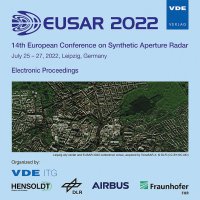On the Relevance of Temporary Persistent Scatterers for Long-Term PS-InSAR Monitoring
Conference: EUSAR 2022 - 14th European Conference on Synthetic Aperture Radar
07/25/2022 - 07/27/2022 at Leipzig, Germany
Proceedings: EUSAR 2022
Pages: 6Language: englishTyp: PDF
Authors:
Doerr, Nils; Schenk, Andreas; Hinz, Stefan (Karlsruhe Institute of Technology (KIT) - Institute of Photogrammetry and Remote Sensing, Karlsruhe, Germany)
Abstract:
The Persistent Scatterer Interferometry (PS-InSAR) is a geodetic technique for displacement monitoring which aims at identifying and analyzing scatterers that dominate the backscatter of their pixels and are coherent over time. Standard PS-InSAR approaches limit themselves to persistent scatterers (PS) which are coherent over the whole considered time series (TS) and neglect scatterers which are only temporary persistent (TPS). In this work, we use an existing method to detect TPS and incorporate them into an existing PS-InSAR approach. We apply the approach to different Sentinel-1 TS of lengths between one and six years in urban and rural areas in the Mekong Δ to study the ratio of the numbers of identified PS to TPS as a function of the TS length. We find that the number of PS decreases steadily with increasing TS length, while the number of TPS increases steadily to exceed the number of PS by far. The number of TPS not only compensates for the loss of PS, but we show that the identified TPS actually enhance the geodetic observation network considerably by analyzing their lifetime. The results are consistent in the urban and rural areas. We strongly recommend the incorporation of TPS into PS-InSAR for long-term monitoring to obtain a best possible PS-based geodetic observation network.


